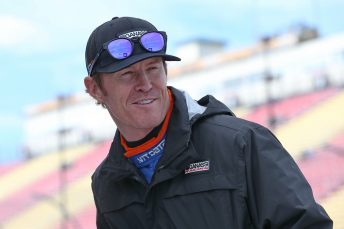
Scott Dixon has described the feel of IndyCar’s new universal bodykit as “drastically different” as sign-off testing wrapped up at Sebring International Raceway.
Dixon was on-hand for the final test of the new Dallara bodykit which will replace the manufacturer-produced kits from next year.
The New Zealander joined Juan Pablo Montoya, Oriol Servia, James Hinchcliffe, and Spencer Pigot for the test, which was conducted with an emphasis on braking settings for road and street courses.
Montoya and Servia, who had conducted the three previous tests, drove a Team Penske Chevrolet and a Schmidt Peterson Motorsports Honda respectively, the latter of which was shared with Hinchcliffe at Sebring.
Dixon drove a Chip Ganassi Honda and Pigot an Ed Carpenter Racing Chevrolet.
“We learned a ton today; the most I’ve learned in a test for quite some time, just because it is so drastically different,” Dixon told IndyCar.com.
“It was kind of what I expected with less grip.
“I think we need to work together with Firestone (control tyre supplier) to find a tyre that’s better suited. They did bring an option, which seemed to be somewhat in the right direction.”
The new bodykit has approximately 30 percent less downforce than those used until the end of the 2017 season, with more generated from the underside of the chassis than the topside.
Aside from brakes, drivers also worked to a program to ensure that wiring looms and communication devices were functioning correctly.
Engineers from Chevrolet, Honda, Firestone, and Cosworth, which supply components including the steering wheel, were also working at the test.
Teams will be supplied with the bodykits and data collected from the sign-off tests in time to start their own testing in January 2018.






















Discussion about this post